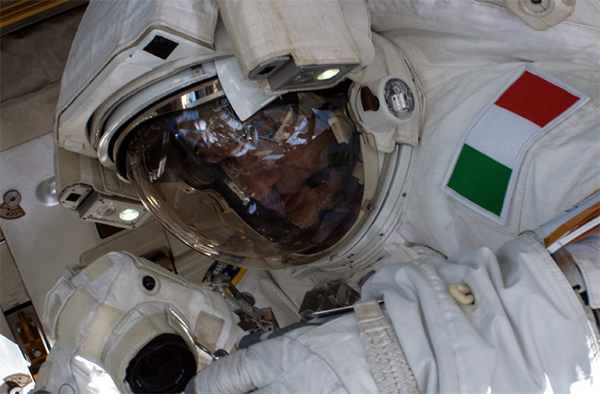Astronaut's Near-Drowning Could Have Been Avoided
European Space Agency astronaut Luca Parmitano, Expedition 36 flight engineer, is photographed here participating in the July 16, 2013, space station spacewalk. 45 minutes into the extra-vehicular activity, Parmitano reported water floating behind his head inside his helmet.
The leaky spacesuit worn by Italian astronaut Luca Parmitano during a spacewalk last July had leaked a week earlier, a problem that NASA failed to correctly diagnose, a panel investigating the near-drowning has found.
Parmitano’s helmet began filling with water during a spacewalk outside the International Space Station on July 16. NASA hastily aborted the outing to prevent the astronaut from drowning.
But the spacesuit worn by Parmitano had actually leaked near the end of the astronaut’s first spacewalk on July 9, a report released Wednesday said.
Engineers misdiagnosed the suit failure when it initially occurred, the report said.
“Had the issue been discussed in more detail ... the team likely would have realized that the water experienced in (Parmitano’s) helmet was ‘out of family’ and needed to be investigated further.
“That investigation would have discovered this failure mode and (the next spacewalk) would have been postponed while the issue was resolved, thus preventing this mishap,” the report said.
Investigators credit Parmitano’s “calm demeanor” with possibly saving his life when up to 1.5 liters of water filled his helmet.
Water covered the astronaut’s eyes, nose and ears, impairing his breathing and vision. By the time Parmitano was helped into the airlock, he had lost audio communications as well.
Investigators ultimately traced the cause of the leak to blockage in a filter that is part of the spacesuit’s cooling system, a condition engineers did not realize could lead to a suit failure.
The source of the contamination remains under investigation.
The panel also found that teams were reluctant to cut in on the station crew’s science work for a more thorough questioning about the original water leak.
"I am especially concerned about cultural factors that may have contributed to the event," NASA administrator Charles Bolden wrote in an agency-wide letter released Wednesday.
“We have a responsibility not to move on from any abnormal situation until we understand it fully or have suitable mitigations to prevent it happening again,” he said.
“When things are going well, we kind of assume that things are OK and we just can press on. But this is telling us that our business is so demanding ... it requires us to all be on the top of our game,” added NASA spaceflight chief William Gerstenmaier.
“If there’s something that doesn’t look right, maybe by us bringing it up somebody else will think of it in a different way, and then through that we discover and understand something that was lurking under the system that we never envisioned occurring,” Gerstenmaier told reporters on a conference call.
The report includes 49 recommendations to improve communication and training and to help employees and contractors raise technical questions.
NASA said it will not schedule any more spacewalks until the panel’s recommendations are implemented.(Feb 26, 2014 02:18 PM ET // by Irene Klotz)












